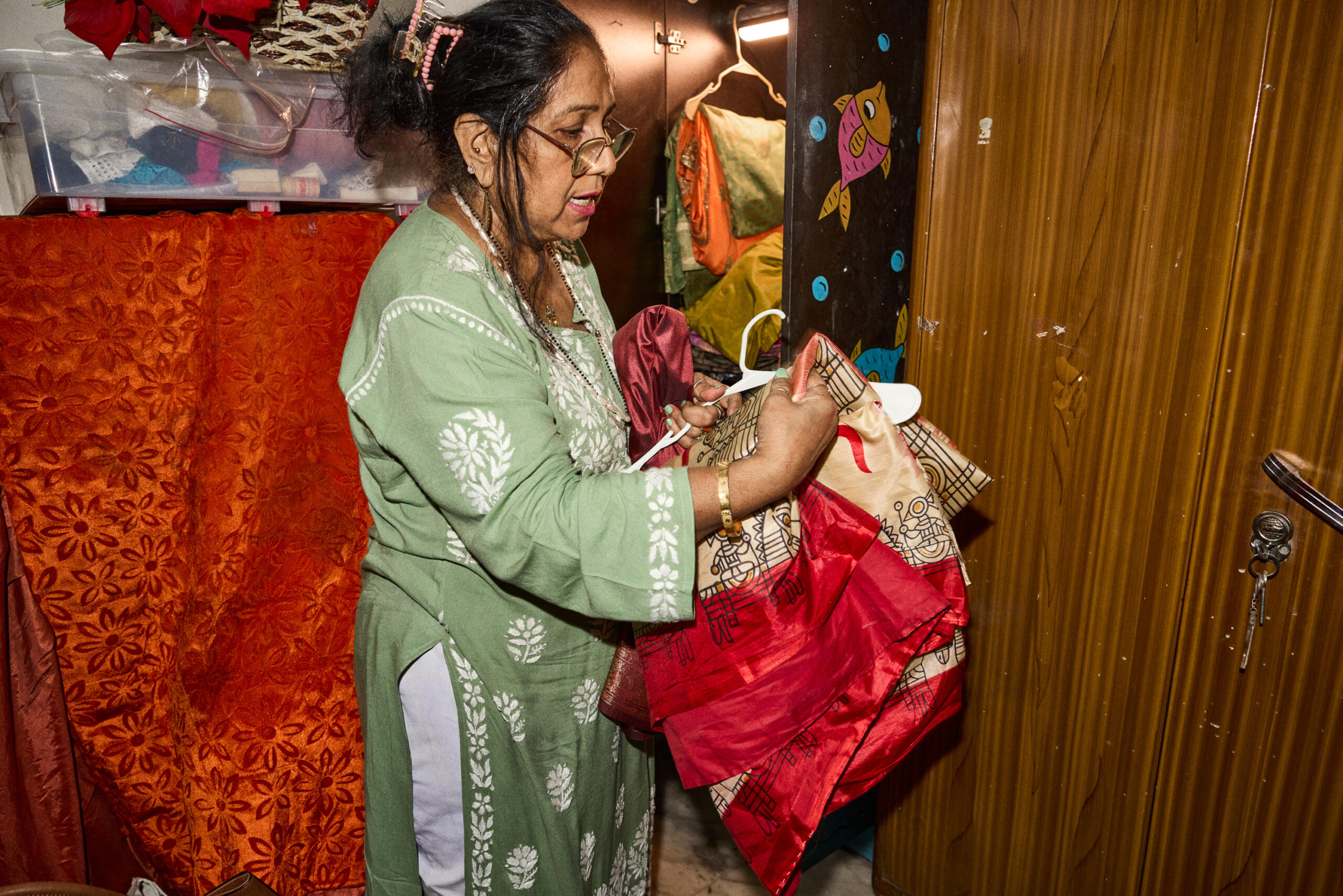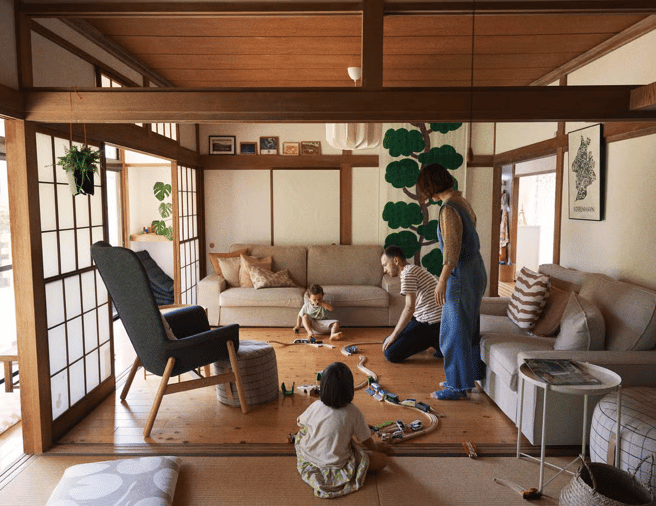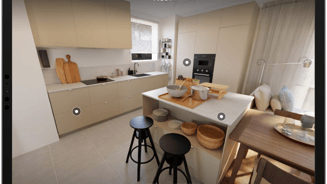By Jeremy Raider-Hoàng, Senior Experience Design Researcher, IKEA Retail (Ingka Group)
In many ways, daily life looks surprisingly similar no matter where you are in the world. As a Design Researcher at IKEA, my team and I study life’s rhythms and diverse cultural settings to help make homes cosier and more reflective of those living in them. Part of my role involves speaking with furniture shoppers to understand various aspects of their lives at home. When it comes to IKEA, a few common associations often pop up: flatpack furniture, Scandinavian design, “the big blue box,” and sometimes even meatballs (or our chicken/veggie alternatives). Yet behind these associations, within every product and digital experience is a quieter but equally important focus: how IKEA listens, learns, and designs for people within their own cultural contexts.
Beyond conversations with people, our team finds what is working well, what can be improved, and new opportunities within any place a customer meets IKEA, uncovering, for example, where a bedroom wardrobe project might stall. Then, we collaborate with designers to remove unnecessary challenges along the way, making the path to a new wardrobe feel simpler and more achievable.
Across cultures, we see similarities and differences in how people live. Our experiences should thoughtfully make room for both. This is where Culturally Sensitive Design Research comes in. It is a lens that we apply to our work that asks for humility. Every new insight we learn carries someone’s rituals, values, and everyday rhythms. To improve our designs, we listen first, then shape ideas that hold nuance, seeking a delicate balance between global and local.
A new culturally sensitive guide
We might start a new research study by immersing ourselves in local media, reading, watching, and listening – to learn dialects, slang, and nuances, ahead of interviewing a customer even when we share a language. As our study progresses, we may observe different behaviours across cultures that can shape digital design. Some people enjoy building from scratch, so we could offer a step-by-step tool to create a wardrobe. Others prefer to begin with a visually appealing starting design and then personalise it. Supporting both options meets different levels of confidence and decision-making styles. The goal is not to highlight cultural contrasts, but to use cultural insights to make our experiences more inclusive.
This practice is not new at IKEA: Since the 1970s, IKEA co-workers have been visiting homes around the world to better understand how people live. Today, we still sit with customers in their homes; yet as IKEA now spans well beyond Europe, our emphasis on cultural sensitivity has never been stronger, designing for experiences far beyond our Swedish roots.
How home visits influenced the digital experience
The guide grew out of years of global fieldwork, along with interviews with our own researchers and designers across markets. It combines practical tips, field anecdotes, and thoughtful reminders that challenge easy assumptions. For example:
- Language is not everything. Just because one speaks a local language does not mean they understand its culture’s nuances. Tone, humour, and social cues all carry meaning that go beyond vocabulary.
- Small gestures matter. Whether it is taking off one’s shoes when entering a home or accepting tea, water, or snacks, mirroring local customs can show respect and ease power dynamics.
- Analysis needs local eyes. Combining local team members (who catch subtle cues) with international team members (who may notice patterns locals take for granted) leads to more balanced interpretations.
- Be wary of over-generalisations. It is tempting to generalise findings into statements like “people here do this” but the guide stresses sharing individual stories and always clarifying who was spoken to.
This resource is not just a set of nice-to-know considerations. It is about how applying them in our work leads to meaningful change. Over the years, we have seen firsthand how Culturally Sensitive Design Research makes a real difference.
If we first stop in China, we brought our app there in 2020, closely following our established global design language. Following the launch, however, we learned that the app differed from familiar digital patterns for Chinese customers, who often expected more information onscreen. Over time we evolved the experience, adding a denser interface where it mattered and clearer ways to reach relevant information. We also included small but meaningful touches, such as acknowledging holidays like Lunar New Year on the welcome screen. As we continued listening, it became clear that these changes made the app feel more familiar, useful, and welcoming for people improving their lives at home.
Culturally Sensitive Design Research has also helped us meet people where they already are in countries like India and the U.S., but in ways that reflect each culture.

In India, many households rely on everyday support from cooks, housekeepers, and nannies. People also turn to service providers, like Urban Company (UC) and Wiffy, when needed for additional support with tasks including painting or plumbing. Rather than asking people to change these habits, we partnered with familiar platforms like UC and Wiffy so IKEA services sit where people already are making tasks like furniture assembly as easy as booking a painter.
In the U.S., one main hurdle is distance. Many customers spend considerable time, fuel, and effort to reach a store. To address this, we have expanded with new store formats that bring more affordable furniture options closer to home, allowing people to save time and money without narrowing their choices.
Shifts like these, in China, India, and the United States, did not happen in a lab; they emerged from listening, learning, and adjusting to local realities. No single solution is perfect in isolation; but incrementally, they add up to a more thoughtful furnishing experience that better mirrors people’s real contexts. By becoming more culturally sensitive, we can create experiences that feel right where they are used, while staying true to what IKEA is all about— a better everyday life for the many, one which embraces the diverse ways that we all live.
A reminder for consumers, designers, researchers, and businesses
For customers, this guide is a window into how much care goes into seemingly simple choices; it is why a digital interface feels more familiar, or a certain phrase or colour feels like home.
For fellow designers, researchers, and businesses, it is a call to be more deliberate. True understanding of customers does not come from one-off conversations and surveys alone. Often, it begins by being a thoughtful guest in someone’s home, paying attention to what is offered for tea, asking questions with genuine curiosity, and listening. That, I suggest, is where meaningful design really starts.

About Ingka Group
With IKEA retail operations in 31 markets, Ingka Group is the largest IKEA retailer and represents 87% of IKEA retail sales. It is a strategic partner to develop and innovate the IKEA business and help define common IKEA strategies. Ingka Group owns and operates IKEA sales channels under franchise agreements with Inter IKEA Systems B.V. It has three business areas: IKEA Retail, Ingka Investments and Ingka Centres. Read more on Ingka.com.
Media enquiries
For further information, journalists and media professionals can contact us at [email protected] or by calling +46 70 993 6376.














